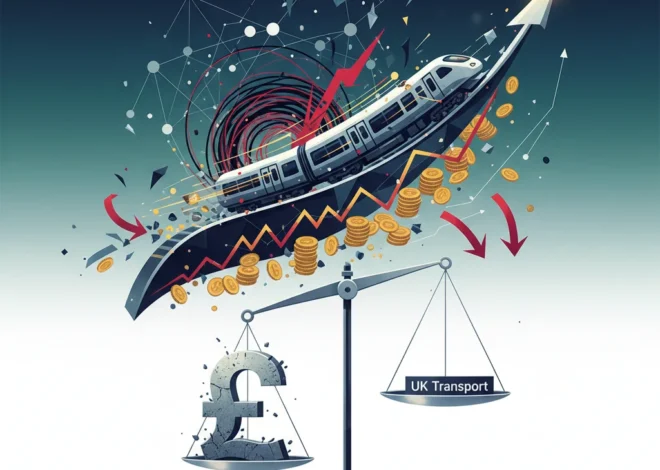
Off the Rails: Analyzing the Financial Fallout of Indonesia’s China-Backed Bullet Train
In the world of national development, few projects carry the symbolic weight of a high-speed railway. It’s a gleaming testament to progress, a steel-and-electricity promise of a faster, more connected future. For Indonesia, the “Whoosh” high-speed train, connecting the bustling capital Jakarta to the cultural hub of Bandung, was meant to be exactly that. As Southeast Asia’s first bullet train, it wasn’t just a piece of infrastructure; it was a statement of ambition and a crown jewel of President Joko Widodo’s development agenda. Yet, less than a year into its operation, the triumphant roar of the Whoosh is being drowned out by the troubling whispers of financial distress, forcing Jakarta into complex and high-stakes debt negotiations with its powerful partner, Beijing.
This project, a flagship of China’s global Belt and Road Initiative (BRI), is now a critical case study for nations and investors worldwide. It raises fundamental questions about the true cost of progress, the complexities of international finance, and the delicate balance of power in geopolitical partnerships. As the balance sheets bleed red, we must look beyond the impressive engineering and ask: Is the Whoosh a model for modern infrastructure, or a cautionary tale of ambition derailing into a mountain of debt?
The Grand Vision Meets a Harsh Reality
The vision for the Jakarta-Bandung high-speed railway was undeniably grand. It promised to slash travel time between the two cities from over three hours to a mere 45 minutes, supercharging economic activity and setting a new standard for public transport in the region. The project was awarded to a consortium of Indonesian and Chinese state-owned companies, PT Kereta Cepat Indonesia China (KCIC), with a significant portion of the financing coming from the China Development Bank.
Initially, the project was hailed as a win-win, built on a business-to-business model that wouldn’t require Indonesian sovereign guarantees. However, the reality of executing such a monumental project soon collided with this optimistic premise. The project was plagued by delays and significant cost overruns, exacerbated by the COVID-19 pandemic and challenging land acquisition processes. The final price tag swelled far beyond initial estimates, a financial reality that has had severe consequences for its operational viability.
Let’s look at the numbers that paint this challenging picture. The initial projections have been starkly contrasted by the current financial status of the project.
| Metric | Initial Estimate / Projection | Current Reality |
|---|---|---|
| Project Cost | $6.07 billion | ~$7.3 billion (source) |
| Cost Overrun | N/A | ~$1.2 billion (source) |
| Projected Daily Ridership | ~30,000 passengers | ~11,000 passengers (average) |
| Initial Financing Model | Business-to-Business (No state guarantee) | Required Indonesian state capital injection |
This stark deviation from the initial plan forced the Indonesian government to inject state capital to cover the overruns, a move that fundamentally altered the risk profile of the investment. The project that was supposed to be a purely commercial venture now has direct implications for the country’s public finances and the broader economy.
The Link Room Strategy: Transforming Corporate Dead Space into High-Value Assets
The Economics of a Bleeding-Edge Train
A project’s success is not measured by its speed, but by its sustainability. On this front, the Whoosh is facing an uphill battle. The core issue is a classic economic mismatch: revenues are failing to meet the massive operational costs and debt servicing obligations. Ridership has consistently fallen short of the break-even point. While the train has seen peaks in passenger numbers during holidays, the average daily traffic is less than half of what was projected to make the project financially viable (source).
Several factors contribute to this ridership gap:
- Ticket Pricing: While fast, the train is significantly more expensive than alternative bus and standard rail services, placing it out of reach for a large segment of the population.
- Last-Mile Connectivity: The stations are located on the outskirts of both Jakarta and Bandung, requiring passengers to take additional transportation to reach their final destinations, adding time and cost that negate some of the high-speed advantage.
- Competition: The existing, cheaper transportation options remain a popular and practical choice for many commuters.
This situation highlights a critical lesson in infrastructure investing: engineering marvels do not guarantee economic success. Flawed demand forecasting, whether due to political pressure or over-optimism, can be the Achilles’ heel of even the most technologically advanced projects. The financial models underpinning such ventures must be ruthlessly realistic, accounting for local consumer behavior, purchasing power, and existing infrastructure.
The problem arises when domestic ambition and geopolitical strategy converge on projects with questionable economic fundamentals. Both sides share responsibility. Beijing, eager to export its industrial capacity and expand its influence, may be too willing to finance risky ventures. Jakarta, eager for a symbol of modernity, may be too willing to overlook red flags in the initial financial modeling. The Whoosh isn’t necessarily a trap set by China, but rather a complex financial entanglement born from mutual ambition, one that now requires a delicate and pragmatic unwinding. The outcome of these negotiations will be a bellwether for the future of BRI projects globally.
The High-Stakes Geopolitical Negotiation
With mounting losses, Indonesia has been forced back to the negotiating table. According to reports, Jakarta is seeking to restructure the loan from the China Development Bank. The key requests include an extension of the loan tenure from 30 to 40 years and a reduction in the interest rate, which is denominated in US dollars and tied to a Chinese benchmark, creating significant currency risk for Indonesia.
However, Beijing is reportedly pushing back, hesitant to set a precedent that could encourage other BRI debtor nations to seek similar concessions. This standoff transforms a commercial dispute into a geopolitical chess match. For Indonesia, a favorable restructuring is crucial to stabilizing its state-owned enterprises and protecting its public finances. For China, any concession could trigger a domino effect across its vast portfolio of overseas loans, impacting its state-owned banking sector and the perceived risk of its global initiatives.
The outcome will have far-reaching implications. It will test the strength of the Indonesia-China relationship and signal to the world how China intends to manage the financial fallout from its more troubled BRI projects. Will it act as a rigid creditor or a flexible partner? The world of international finance is watching closely.
The Perfect Storm: How Political Optimism and Geopolitics Sent Japanese Stocks to Record Highs
Lessons for Investors and the Future of Infrastructure Finance
The saga of the Whoosh train offers invaluable, if painful, lessons for investors, policymakers, and business leaders. It serves as a stark reminder of the immense risks associated with mega-projects, especially in emerging markets.
For those involved in investing, several key takeaways emerge:
- Scrutinize the Fundamentals: Never be blinded by the prestige of a project. The most critical due diligence lies in the demand forecasts, operational cost analysis, and the underlying economic assumptions. Overly optimistic projections are a major red flag.
- Understand the Political Risk: Large infrastructure projects are inherently political. A change in government, a shift in policy, or the pursuit of legacy-building can override sound financial judgment. Assessing the political landscape is as important as analyzing the balance sheet.
- Price in Currency and Interest Rate Risk: For projects financed in a foreign currency, like the Whoosh’s US dollar-denominated loan, the risk of local currency depreciation can be catastrophic. This must be a core consideration in any financial model.
Looking forward, this case may also spur innovation in how such projects are managed. The lack of transparency in project costs and execution is a common criticism of BRI projects. This is where modern financial technology could play a role. Imagine a future where major infrastructure financing is managed on a distributed ledger, or blockchain, providing an immutable and transparent record of expenditures for all stakeholders. While not yet standard practice, the challenges posed by projects like the Whoosh underscore the need for greater transparency and accountability, which fintech solutions are well-positioned to provide.
Beyond the Paycheck: A Tech Investor's Guide to Building a Recession-Proof Career
Conclusion: A Journey or a Destination?
The Whoosh bullet train is at a critical juncture. It remains a magnificent feat of engineering and a symbol of Indonesia’s forward momentum. However, its journey is now inextricably linked to a daunting financial destination. The ongoing debt negotiations with China will determine not only the future of this specific railway but also the trajectory of future collaborations between the two nations and the broader evolution of the Belt and Road Initiative.
For the global community, the story of the Whoosh is more than just a local news item; it is a live-fire stress test for the prevailing model of global infrastructure development. It teaches us that the path to progress is not always a straight line. Sometimes, it’s a winding track fraught with financial peril, requiring careful navigation, pragmatic compromise, and a clear-eyed view of the true costs involved. Whether the Whoosh ultimately becomes a sustainable engine of economic growth or a monument to costly ambition is a question whose answer will resonate across the global economics landscape for years to come.


